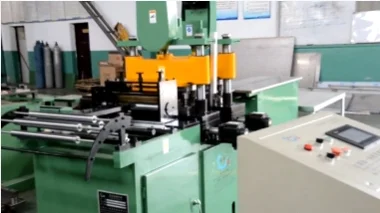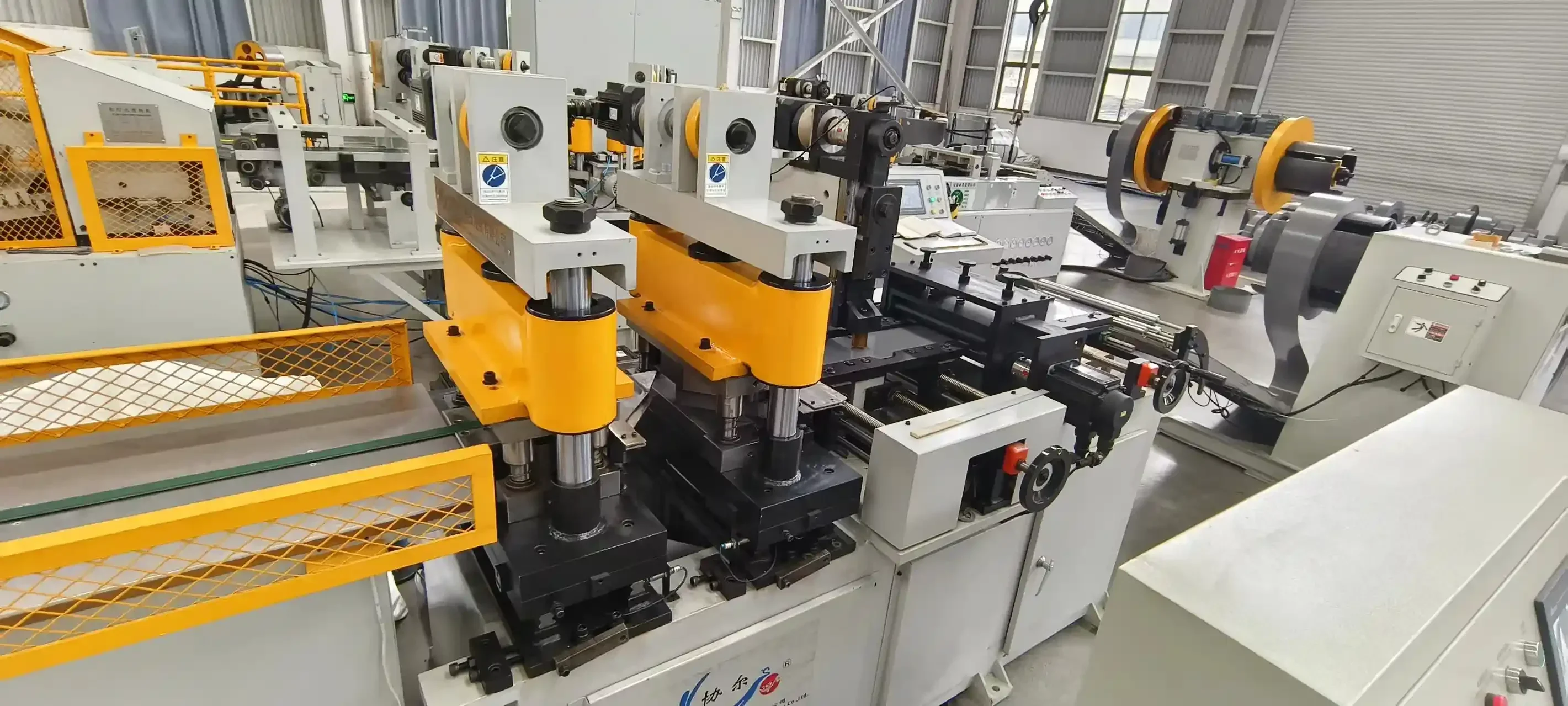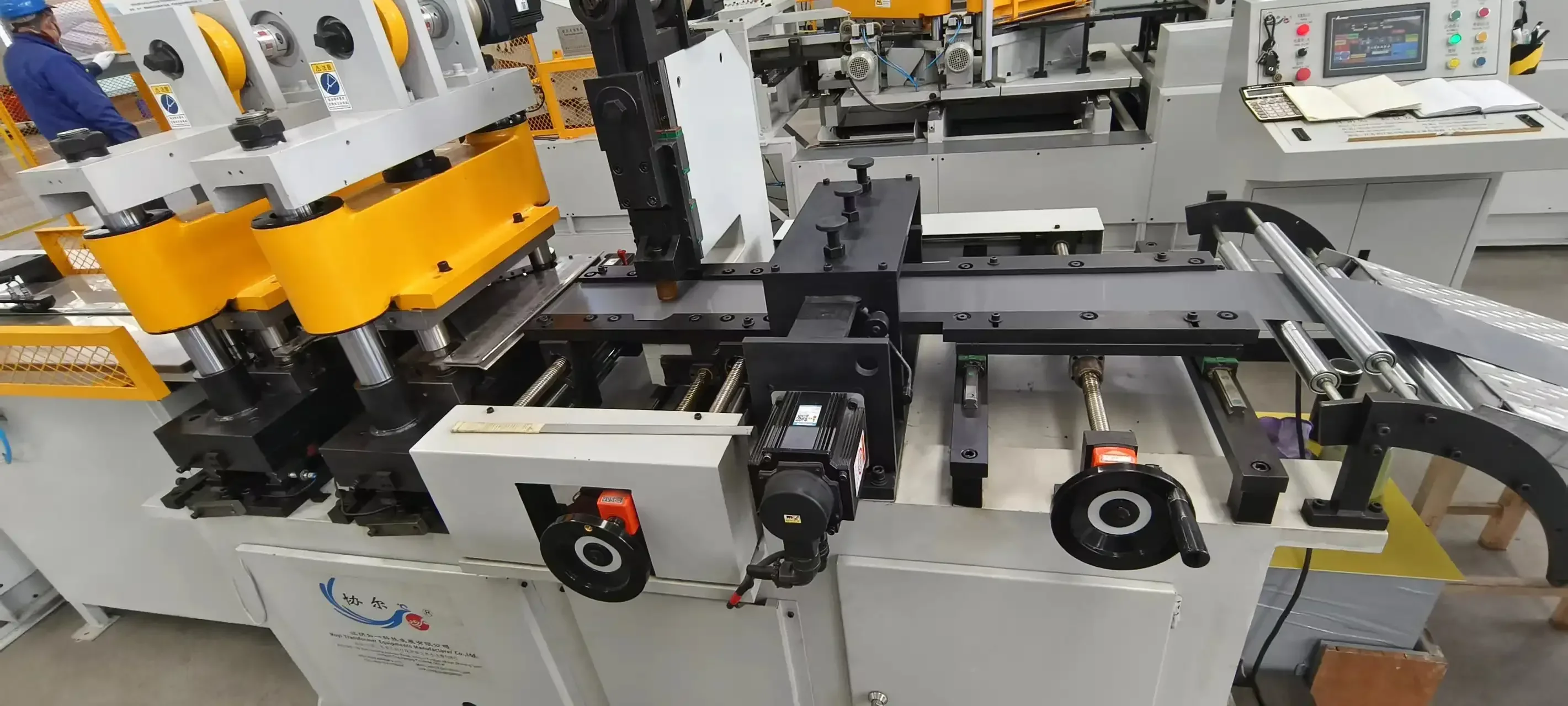In the manufacturing of transformers, precision in cutting transformer core sheets is critical for ensuring optimal performance and efficiency. Ruyi Transformer Equipments Manufacturer Co., Ltd specializes in producing advanced cross-cutting machines designed specifically for this purpose. This article will provide a comprehensive overview of how the transformer core column sheet cross-cutting line operates, its components, advantages, and applications in industrial settings.
Understanding Transformer Core Sheets
What are Transformer Core Sheets?
Transformer core sheets are thin layers of magnetic material used in the construction of transformers. These sheets are typically made from silicon steel, which has low iron loss and high permeability, making it ideal for electrical applications. The core is essential for enhancing the magnetic efficiency of transformers, allowing them to operate effectively in energy transmission and distribution.
Importance of Precision Cutting
Precision cutting of transformer core sheets is vital for several reasons:
Efficiency: Properly cut sheets ensure that there is minimal air gap in the core, which enhances magnetic performance.
Material Utilization: Accurate cuts reduce waste, allowing manufacturers to maximize their material usage.
Assembly Quality: Precise dimensions contribute to better assembly and structural integrity of the transformer.

Components of the Cross-Cutting Line
1. Feeding System
The feeding system is responsible for transporting the coil or sheet material into the cutting area. It must ensure a consistent feed rate to maintain cutting accuracy. The system typically includes:
Rollers: To guide and stabilize the material as it enters the machine.
Sensors: To monitor the position and alignment of the material.
2. Cutting Mechanism
The cutting mechanism is the heart of the cross-cutting line. It consists of:
Cutting Blades: High-speed blades designed to slice through silicon steel sheets with precision.
Adjustable Cutting Width: Allows operators to set the desired width based on specific requirements.
3. Control System
Modern cross-cutting lines are equipped with advanced control systems that automate various functions:
Programmable Logic Controllers (PLCs): Manage the operation of feeding, cutting, and ejection processes.
User Interface: Provides operators with real-time data on machine performance and allows for adjustments.
4. Ejection System
After cutting, the ejection system removes finished pieces from the cutting area. This system includes:
Pneumatic Ejectors: To push cut sheets out of the machine without damaging them.
Conveyor Belts: For transporting finished products to subsequent processing stages.
How the Cutting Process Works
Step-by-Step Cutting Process
Material Loading: The operator loads a coil of silicon steel onto the feeding system.
Feeding: The feeding system pulls the material into position, aligning it for cutting.
Cutting Operation: The control system activates the cutting mechanism based on pre-set parameters:
The blades move downwards to slice through the material at high speed.
The adjustable width allows for precise cuts tailored to specifications.
Ejection: Once cut, pneumatic ejectors push the finished sheets onto a conveyor belt for further processing or packaging.
Quality Control Measures
Quality control is integral throughout this process:
Thickness Measurement: Sensors check that each sheet meets required thickness specifications.
Dimensional Inspection: Automated systems verify that cut dimensions are within tolerance limits using laser measurement technology.

Advantages of Using a Cross-Cutting Line
Increased Efficiency
Cross-cutting lines significantly enhance production efficiency by automating many manual processes associated with cutting transformer cores. This automation leads to faster production cycles and reduced labor costs.
Improved Precision
With advanced technology, these machines provide high precision in cuts, ensuring that each sheet meets stringent quality standards essential for transformer performance.
Reduced Waste
By optimizing material usage through accurate cuts, manufacturers can minimize waste and lower costs associated with raw materials.
Enhanced Safety
Modern cross-cutting lines incorporate safety features such as emergency stop buttons and protective guards around moving parts, reducing workplace accidents.
Applications in Industrial Settings
Transformer Manufacturing
The primary application of cross-cutting lines is in transformer manufacturing where high-quality core sheets are essential for efficient energy transfer and minimal losses.
Electrical Equipment Production
Beyond transformers, these cutting lines can be utilized in producing other electrical equipment requiring precise metal components, such as inductors and reactors.
Custom Fabrication Services
Manufacturers offering custom fabrication services can leverage cross-cutting technology to meet specific client demands for various shapes and sizes of metal sheets.

Conclusion
The transformer core column sheet cross-cutting line represents a critical component in modern manufacturing processes related to transformers and electrical equipment. By understanding how this technology works—including its components, operational principles, and advantages—manufacturers can make informed decisions about their production capabilities.
Ruyi Transformer Equipments Manufacturer Co., Ltd stands at the forefront of this evolution by providing state-of-the-art machinery designed to meet the demanding needs of today's manufacturing landscape. Investing in high-quality cross-cutting technology not only enhances production capabilities but also ensures that manufacturers remain competitive in an ever-evolving market.


